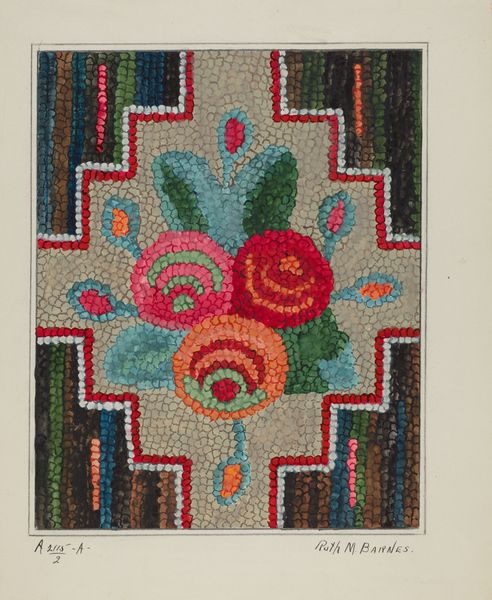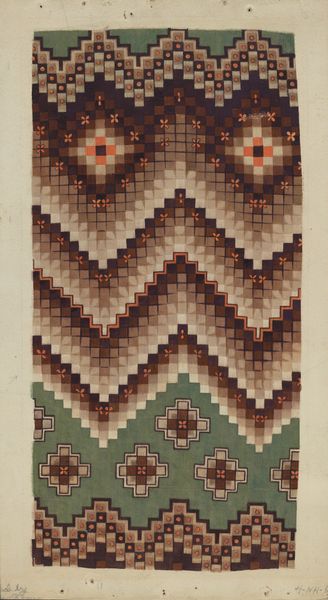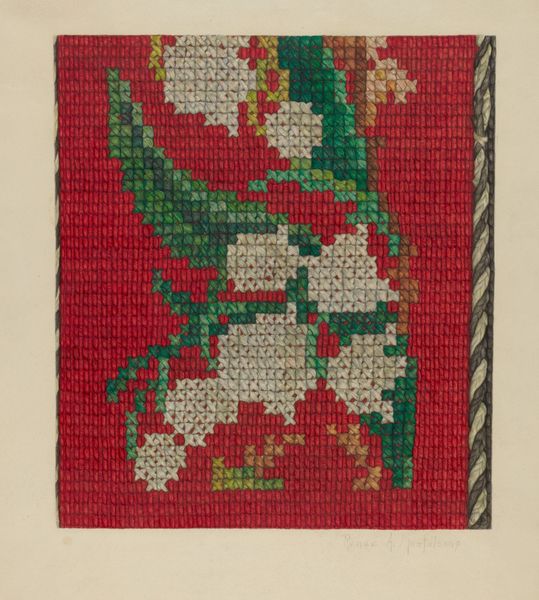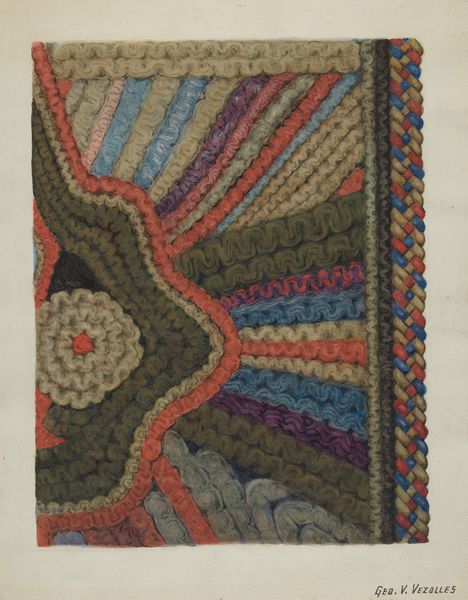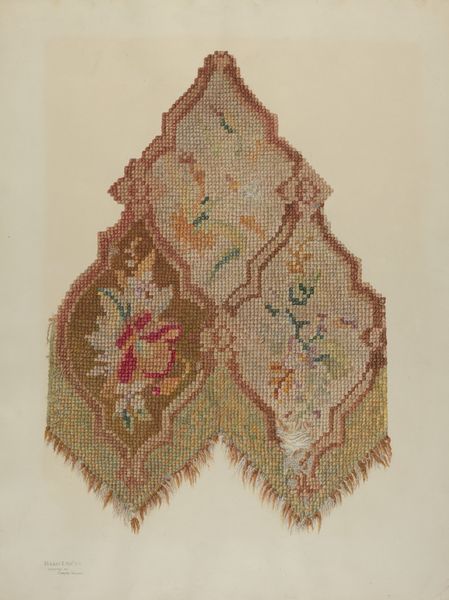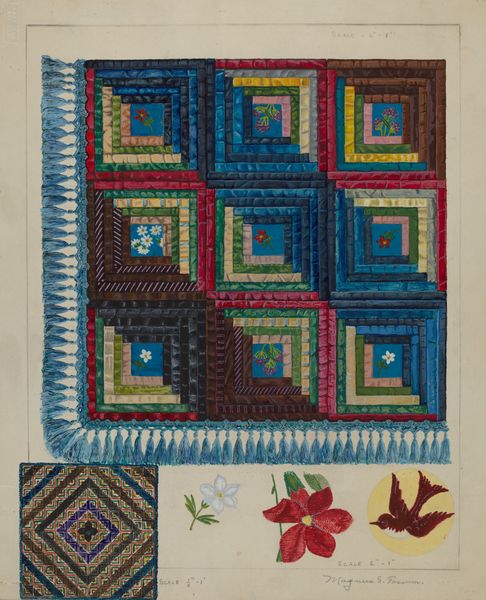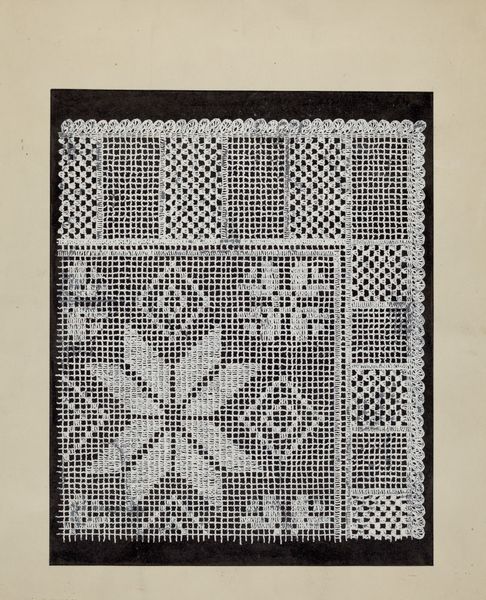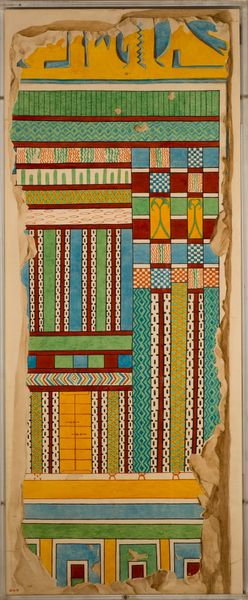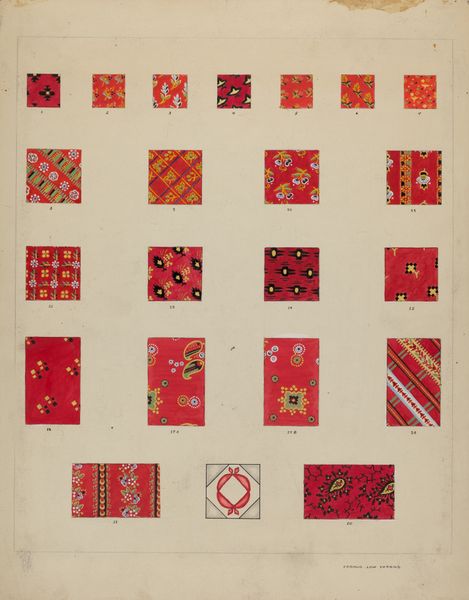
drawing, textile, paper, watercolor
#
drawing
#
water colours
#
textile
#
paper
#
watercolor
#
geometric
#
decorative-art
#
decorative art
#
watercolor
Dimensions: overall: 35.7 x 26.5 cm (14 1/16 x 10 7/16 in.) Original IAD Object: 50" high; 50" wide
Copyright: National Gallery of Art: CC0 1.0
Editor: We’re looking at "Table Cover" from around 1936, it seems, made with textile, paper, and watercolor by Ruth M. Barnes. It has a very pixelated, geometric look, almost like a vintage video game graphic. What can you tell me about this work? Curator: I see an intersection between craft and fine art here. Barnes is using traditional materials – textile, paper, watercolor – to mimic the look of needlepoint or cross-stitch. Consider the labor involved. Someone likely conceived this design, and the means to reproduce it required repetitive action, stitch by stitch. What does that repetitive process tell us about the role of "women's work" and domestic art versus "high art" practices? Editor: So, it's almost like she's elevating a traditionally domestic craft to the level of art simply by the materials she's using? Curator: Precisely! And also perhaps by divorcing it from its utilitarian function. This "Table Cover" isn't meant to be used as a table covering, but rather as a representation of one. It challenges our assumptions about artistic value. What labor is valued, whose labor is valued, and why? The use of watercolor on paper to imitate the texture of textile pushes boundaries, wouldn't you agree? Editor: I do! I hadn't thought of it in terms of labor and value. The deception makes me rethink it. It feels much more subversive now. Curator: The social context surrounding the production and consumption of craft objects in the 1930s also becomes crucial. Mass production was on the rise, but so was a renewed appreciation for handmade items as signifiers of authenticity and individuality. Editor: Right, it's a reaction against the mass-produced. Now that you mention it, I appreciate it so much more. Curator: Seeing how everyday objects like a table cover, become a medium for artistic expression helps appreciate the unseen labor woven into the fabric of our lives.
Comments
No comments
Be the first to comment and join the conversation on the ultimate creative platform.
